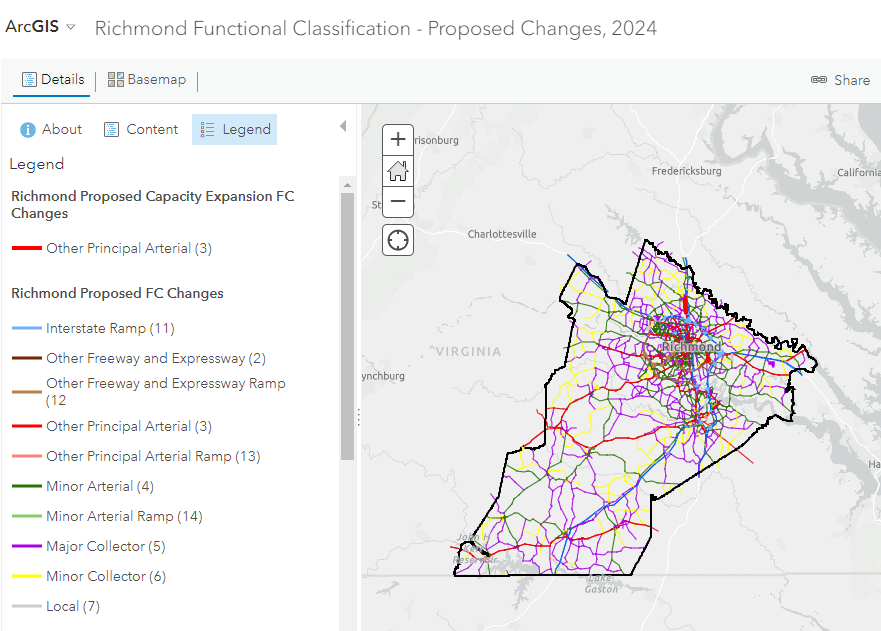On September 5, 2024, the Richmond Regional Transportation Planning Organization (RRTPO) Policy Board approved an important update: the Virginia Department of Transportation's (VDOT) revision of the Federal Functional Classification (FFC) system. This update is significant because it affects how roads are planned, funded, and operated across the state.
The Technical Advisory Committee (TAC) reviewed the proposed updates and recommended approval. A draft resolution was provided for consideration by the Policy Board.
Here’s a breakdown of what you need to know about this update and how it impacts our region and your local community:
What is Functional Classification?
Functional classification is a system used to categorize roads based on their function and importance in the transportation network. This classification determines:
-
- Road Design: The geometric standards for road design, including lane widths, turning radii, and intersection layouts.
-
- Funding: Eligibility for federal and regional transportation funds used for road improvements and maintenance.
-
- Maintenance: The frequency of inspections and maintenance requirements by VDOT.
-
- Access Management: How and where access points like driveways and interchanges are allowed.
-
- Traffic Calming: Eligibility for measures to reduce traffic speeds and improve safety.
Why the Update?
Functional classification is typically reviewed every decade, following the release of new census data. The most recent update, based on the 2010 Census data, was approved in 2014. With the release of the 2020 Census data, VDOT is updating the FFC system to reflect changes in our transportation needs and infrastructure.
Key Changes in the Update
The current update focuses on aligning the functional classification system with VDOT’s Linear Referencing System. This primarily involves:
-
- Adding Interchange Ramps: Incorporating ramps into the classification system for more accurate planning and management.
Example: Suppose a new highway interchange is constructed at a major junction. Previously, the interchange ramps leading to and from this highway might not have been included in the road classification system. With the update, these ramps are now classified and documented within the system. This means that the ramps are now recognized in planning and management activities, such as maintenance scheduling, traffic flow analysis, and infrastructure development. For instance, if the ramps have high traffic volumes or are critical for local access, they can be prioritized for improvements or maintenance more effectively.
- Adding Interchange Ramps: Incorporating ramps into the classification system for more accurate planning and management.
-
- Adjusting Road Classifications: Updating classifications to better reflect current road functions and usage patterns.
Example: Consider a road that was originally classified as a "Local Road" but has experienced significant growth in traffic volume due to new commercial developments and residential areas. In the updated classification system, this road might be reclassified as a "Collector Road" or "Arterial Road" to better reflect its increased importance in the transportation network. This reclassification would affect how resources are allocated for road improvements, traffic management, and future planning. It could also impact how funding is distributed and which projects are prioritized for the road.
- Adjusting Road Classifications: Updating classifications to better reflect current road functions and usage patterns.
Why It Matters
The functional classification of roads influences:
-
- Design and Safety: Ensures roads are built and maintained to appropriate standards for their role in the network.
-
- Funding Opportunities: Affects which roads can receive federal and regional funding for improvements.
-
- Maintenance Practices: Determines how frequently roads are inspected and maintained.
Get Involved
If you have questions or want more information about how this update affects you, contact Myles Busching at 804-924-7035 or via email at mbusching@planrva.org. For more details, refer to the draft resolution of approval (p. 70 of the 9/5/24 meeting agenda) and additional resources available through PlanRVA.
Stay informed and engaged as we work together to enhance our transportation system and address the needs of our community.


